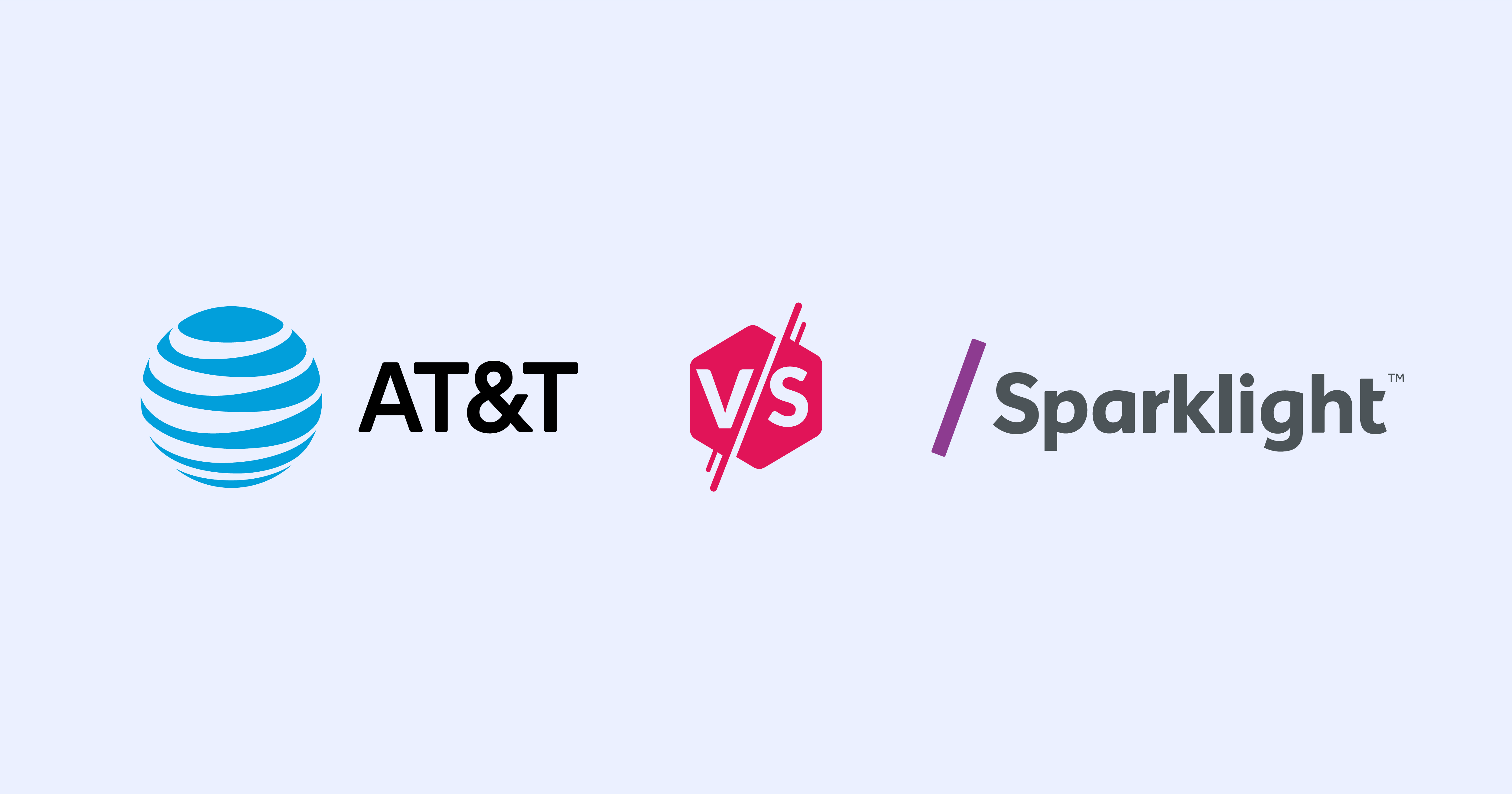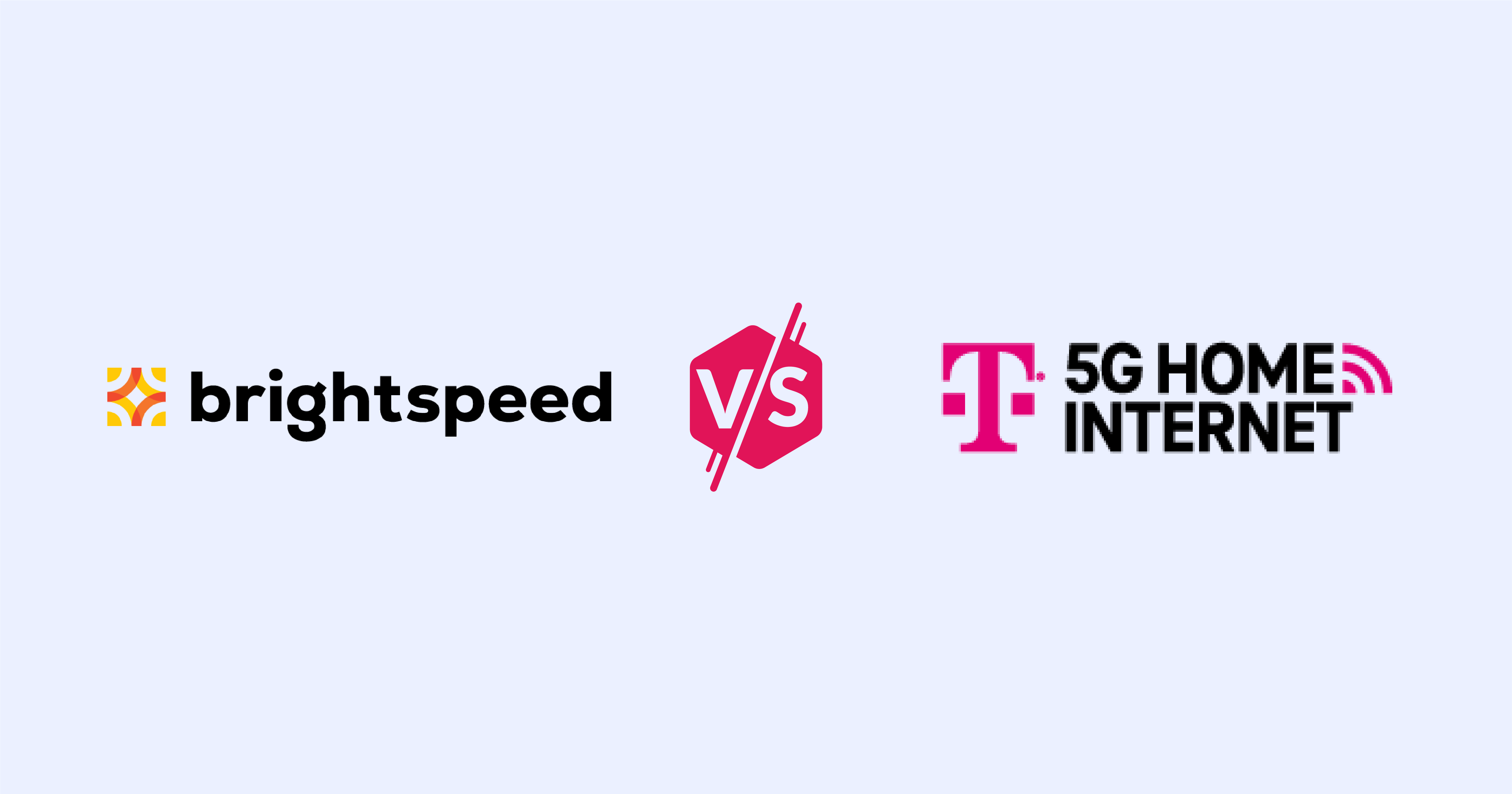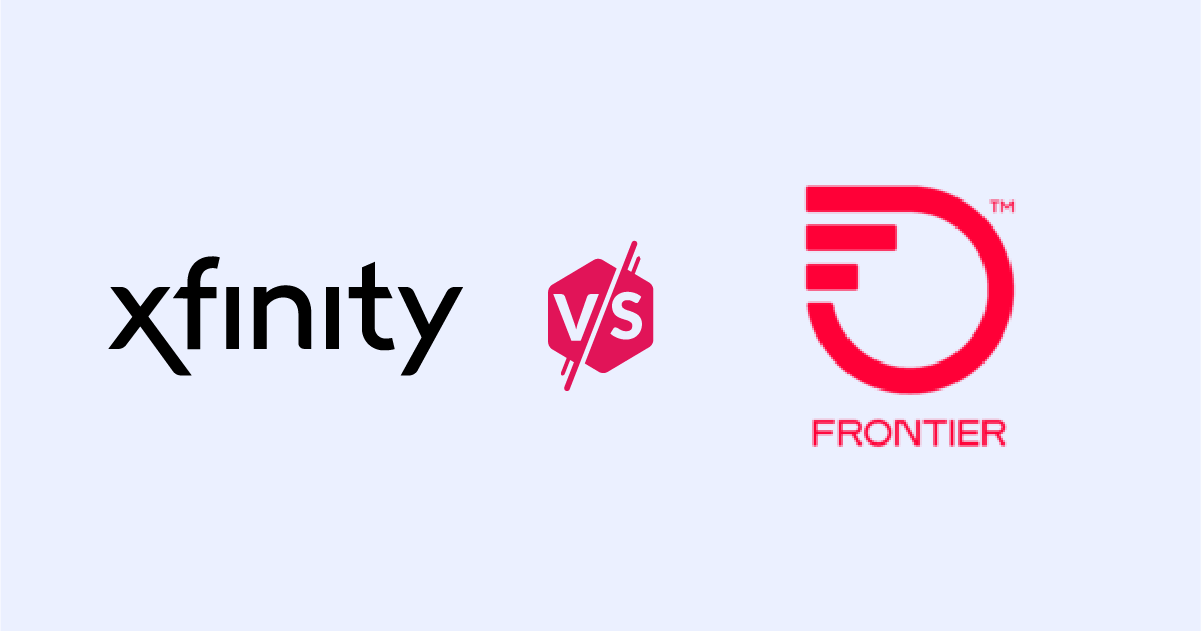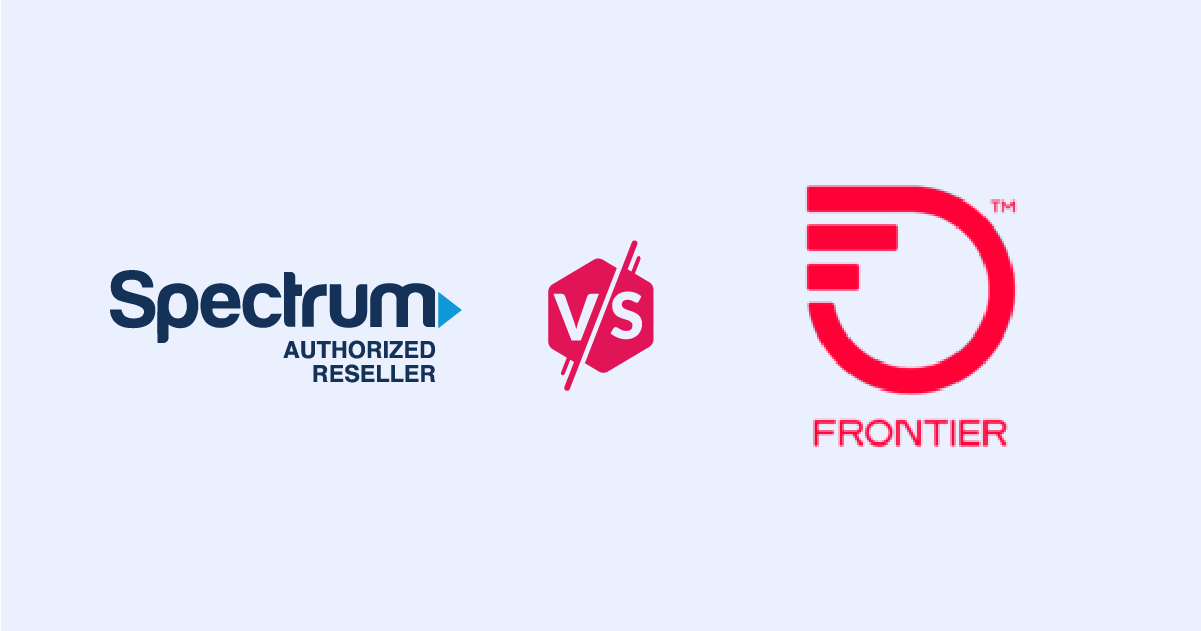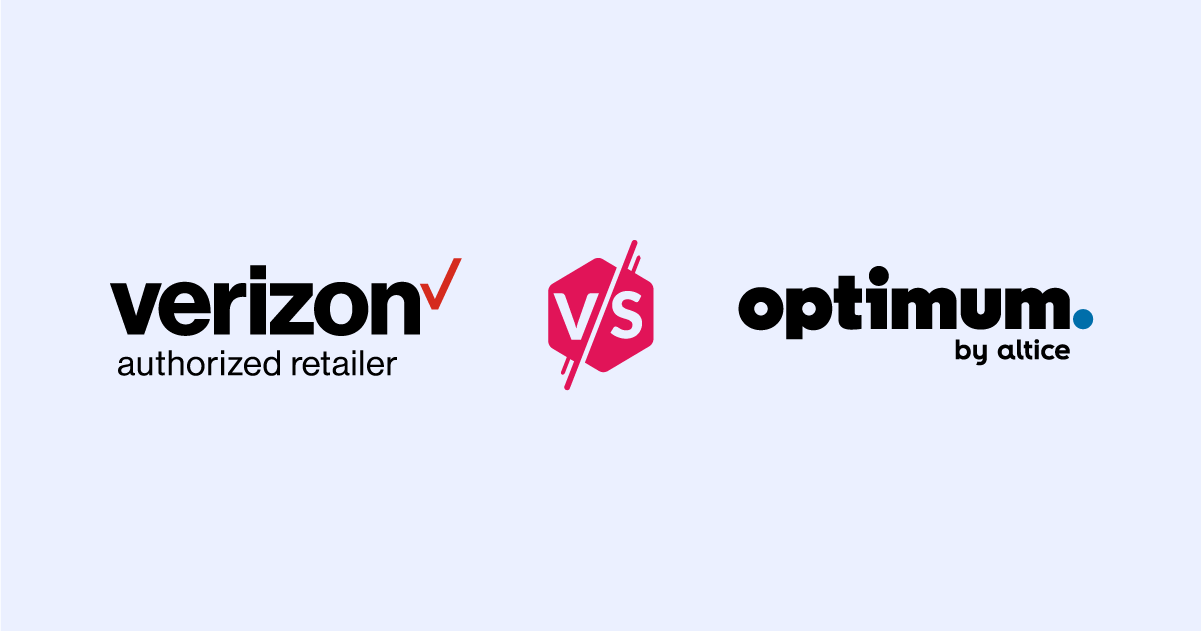Google Fiber vs. CenturyLink Fiber: Which Internet Provider Is Best for You?
Which fiber plan offers the most value for your household?
Aug 28, 2023 | Share
Provider Comparisons (Versus)
-
Best speeds
- Price: $70.00–$150.00/mo.
- Speed: 1,000–8,000 Mbps (1–8 Gbps)*
- Internet type: Fiber
- Data cap: No data cap
- Contract: No contract
-
Best Availability
- Price: $30.00-$75.00/mo.
- Speed:200-940 Mbps†
- Internet type: Fiber
- Data cap: No data cap
- Contract: No contract
Data effective 7/5/2023. Offers and availability may vary by location and are subject to change.
*Plus taxes and fees. Upload/download speed and device streaming claims are based on maximum wired speeds. Actual Internet speeds are not guaranteed and may vary based on factors such as hardware and software limitations, latency, packet loss, etc.
†Speed may not be available in your area. Paperless billing or prepay required. Additional taxes, fees, and surcharges apply. DSL customers get the fastest internet speed available at your location (max speed is up to 100 Mbps). Speed may not be available in your area. Maximum download/upload speed of up to 940 Mbps via a wired connection. Paperless billing required. Taxes and fees apply. Offer details. Offer includes professional installation at customer’s eligible location.
Compare Google Fiber and CenturyLink head to head
Google Fiber set the bar for fiber-to-the-home internet service, offering some of the fastest home internet speeds available in the US. CenturyLink was one of the biggest DSL providers in the country, but it has embraced the shift to fiber and, along with Google Fiber, is leading the way in providing affordable fiber options.
Pros and cons: Google Fiber vs. CenturyLink
 Pros:
Pros:
- Gigabit and multigigabit speeds (1,000–8,000 Mbps)
- No hidden fees
 Cons:
Cons:
-
- Limited availability
 Pros:
Pros:
- Gigabit fiber speeds
 Cons:
Cons:
- Limited fiber availability
- Additional equipment fees
Plans and pricing: Google Fiber vs. CenturyLink
Google Fiber offers gigabit and multigigabit fiber internet connections at a reasonable price, with CenturyLink’s gigabit plan tying for the low price. CenturyLink also offers slower DSL plans if you don’t want to pay for gigabit speeds, but it lacks a multigigabit option like Google Fiber’s.
Google Fiber plans and pricing
| Package | Price | Speed | Order online |
|---|---|---|---|
| Google Fiber 1 Gig | $70.00/mo.* | 1,000 Mbps (1 Gbps) | |
| Google Fiber 2 Gig | $100.00/mo.* | 2,000 Mbps (2 Gbps) | |
| Google Fiber 5 Gig | $125.00/mo.** | 5,000 Mbps (5 Gbps) | |
| Google Fiber 8 Gig | $150.00/mo.** | 8,000 Mbps (8 Gbps) |
Data effective 9/8/2022. Offers and availability may vary by location and are subject to change.
*Plus taxes and fees. Upload/download speed and device streaming claims are based on maximum wired speeds. Actual Internet speeds are not guaranteed and may vary based on factors such as hardware and software limitations, latency, packet loss, etc.
**Available in select markets only. Plus taxes and fees. Upload/download speed and device streaming claims are based on maximum wired speeds. Actual Internet speeds are not guaranteed and may vary based on factors such as hardware and software limitations, latency, packet loss, etc.
Google Fiber provides a lot of speed for a good price, something that customers who need a fast connection can appreciate. It’s a relatively small internet service provider (ISP), but it’s had a huge influence on home internet, popularizing fiber-optic internet as a practical option.1 It lacks the slower, budget plans that most ISPs offer, but it still has one of the most affordable gigabit plans around.
CenturyLink plans and pricing
| Package | Price | Speed | Order online |
|---|---|---|---|
| CenturyLink Fiber Internet 200Mbps | $30.00/mo.* | Up to 200 Mbps | |
| CenturyLink Fiber Gigabit Internet | $75.00/mo.‡ | Up to 940 Mbps |
Data effective 7/5/2023. Offers and availability may vary by location and are subject to change.
*Limited availability. Service and rate in select locations only. Paperless billing required. Taxes and fees apply.
‡ Speed may not be available in your area. Maximum download/upload speed of up to 940 Mbps via a wired connection. Paperless billing required. Taxes and fees apply. Offer details. Offer includes professional installation at customer’s eligible location.
CenturyLink offers just one plan, its reasonably priced gigabit connection. As with Google Fiber, its biggest disadvantage is simply its limited availability, especially compared to CenturyLink’s existing DSL network. Fortunately, CenturyLink has invested heavily in expanding its fiber network, so hopefully its DSL customers won’t have to wait too long for fiber in their neighborhoods.

Deals and promotions: Google Fiber vs. CenturyLink
| Get the 1 Gig plan for $70 per month to have 1,000 Mbps speeds with no data caps and free installation. |
| If you refer a new customer to CenturyLink services and they sign up, you and the new customer will both get a reward of up to $100. |
Extra fees: Google Fiber vs. CenturyLink
| Equipment Fee | Installation Fee | |
|---|---|---|
| Google Fiber | Free | Free |
| CenturyLink |
|
|
Data effective 7/5/2023. Offers and availability may vary by location and are subject to change.
One of the great things about Google Fiber is its lack of hidden fees and upfront costs. When you sign up, all your equipment is provided at no cost, along with professional installation. CenturyLink’s equipment and installation prices are affordable compared to other ISPs, but it’s hard to compete with free.
Internet types: Google Fiber vs. CenturyLink
| Internet type | Order online | |
|---|---|---|
| Google Fiber | Fiber | |
| CenturyLink | Fiber |
Google Fiber is exactly what its name implies. If you sign up for Google Fiber, you get a high-speed fiber connection. Most of CenturyLink’s coverage area offers only DSL plans, but it is rapidly expanding its fiber footprint to keep up with the changing internet landscape.
Data caps: Google Fiber vs. CenturyLink
| Data Cap | Order online | |
|---|---|---|
| Google Fiber | None | |
| CenturyLink | None |
Neither Google Fiber nor CenturyLink impose data caps on their customers, and we think that’s great. Data caps serve no purpose on modern wired networks other than to squeeze unexpected fees out of customers, so we’re pleased to see both these ISPs ditch them completely.
Contracts: Google Fiber vs. CenturyLink
| Contract length | Order online | |
|---|---|---|
| Google Fiber | No contract | |
| CenturyLink | No contract |
Contracts and early termination fees are another area where many ISPs get you, but thankfully you don’t have to worry about that with either Google Fiber or CenturyLink. Neither provider locks you into a long-term contract—another move that shows they’re confident in the quality of their product and don’t need to coerce their customers into sticking around.
Installation: Google Fiber vs. CenturyLink
| Installation options | Order online | |
|---|---|---|
| Google Fiber |
| |
| CenturyLink |
|
Data effective 7/5/2023. Offers and availability may vary by location and are subject to change.
Google Fiber offers free professional installation. CenturyLink has an option for free self-installation if your house is already wired, but it also offers professional installation for $99.00, which isn’t a terrible price.
Having personally had both providers’ fiber connections installed in my home, I can say that, while the CenturyLink installation was fine, Google Fiber did an amazing job. Every cable was neat, tidy, and firmly secured. The finished connection was just a clean wall jack with no mess to worry about. While home fiber is becoming the norm, rather than a luxury, Google Fiber’s quality still lives up to the hype it had a decade ago.
Availability: Google Fiber vs. CenturyLink
The biggest drawback to both providers is limited fiber availability. Although Google Fiber is slowly rolling out in more cities, CenturyLink definitely has more momentum. If you live in an area with access to CenturyLink’s DSL network, it’s a good bet that fiber is coming your way eventually. You also have CenturyLink’s DSL as a stopgap, but there are likely other ISPs offering faster speeds in your area as well.
Final call: Google Fiber vs. CenturyLink
Google Fiber and CenturyLink are easily two of the best and most affordable fiber providers in the country, but Google Fiber is definitely the better choice for most people, if you can get it. With a basic fiber plan on par with Google Fiber, CenturyLink is about as close as you can get if you don’t live in a Google Fiber city, but don’t forget to consider equipment fees when considering the pros and cons.
Methodology
Our HighSpeedInternet.com editorial team bases our analyses on customer input from our annual customer satisfaction survey, results from our speed test tool, and proprietary internet provider data on speeds and pricing. To strengthen our research, we look closely at provider contracts to get hard-to-find information on price hikes, data caps, and extra fees, and we keep tabs on the latest news reports and online reviews. When applicable, we also rely on our personal experiences testing these services.
More about Google Fiber and CenturyLink
Author - Peter Christiansen
Peter Christiansen writes about satellite internet, rural connectivity, livestreaming, and parental controls for HighSpeedInternet.com. Peter holds a PhD in communication from the University of Utah and has been working in tech for over 15 years as a computer programmer, game developer, filmmaker, and writer. His writing has been praised by outlets like Wired, Digital Humanities Now, and the New Statesman.
Editor - Rebecca Lee Armstrong
Rebecca Lee Armstrong has more than six years of experience writing about tech and the internet, with a specialty in hands-on testing. She started writing tech product and service reviews while finishing her BFA in creative writing at the University of Evansville and has found her niche writing about home networking, routers, and internet access at HighSpeedInternet.com. Her work has also been featured on Top Ten Reviews, MacSources, Windows Central, Android Central, Best Company, TechnoFAQ, and iMore.
